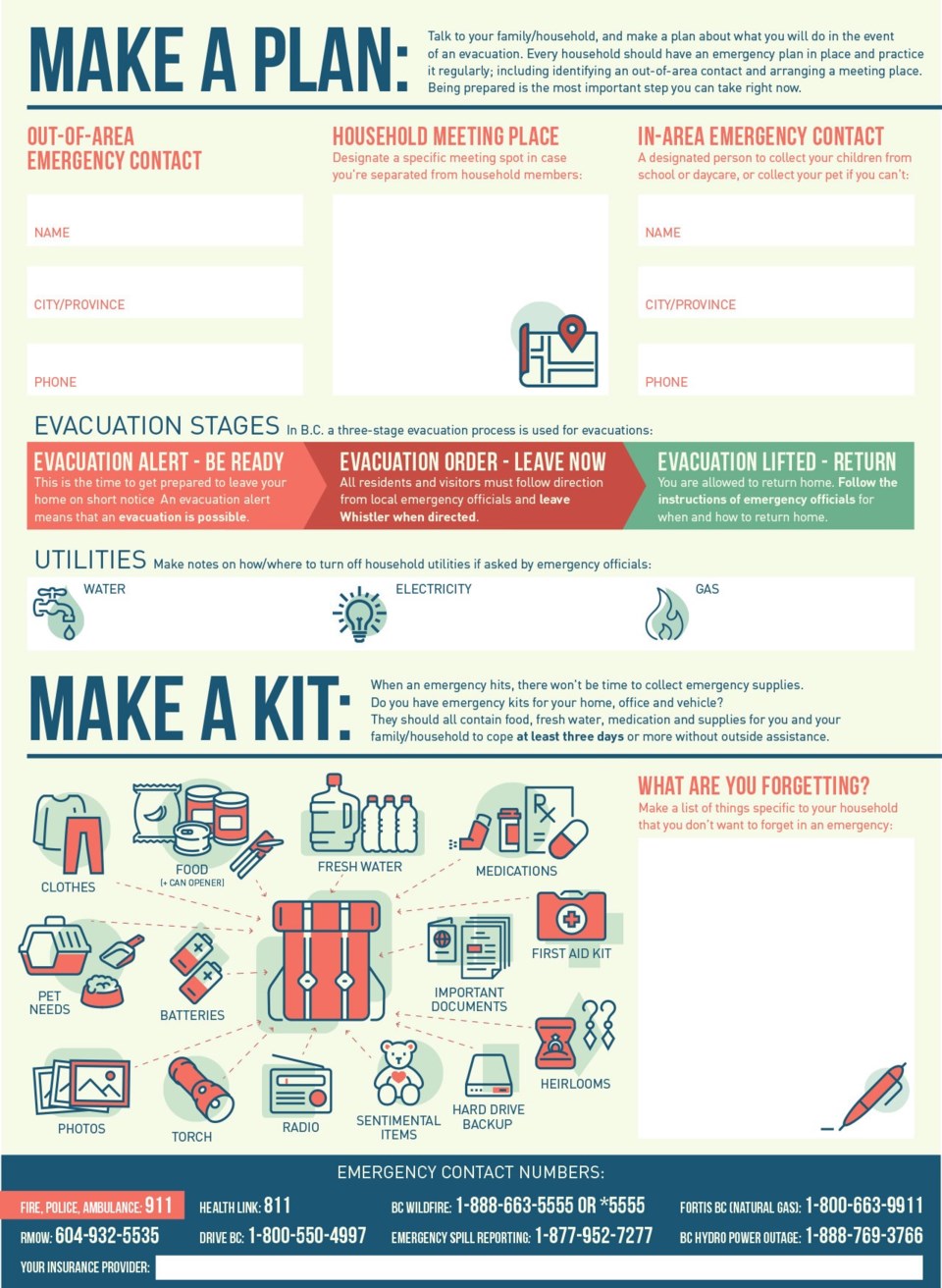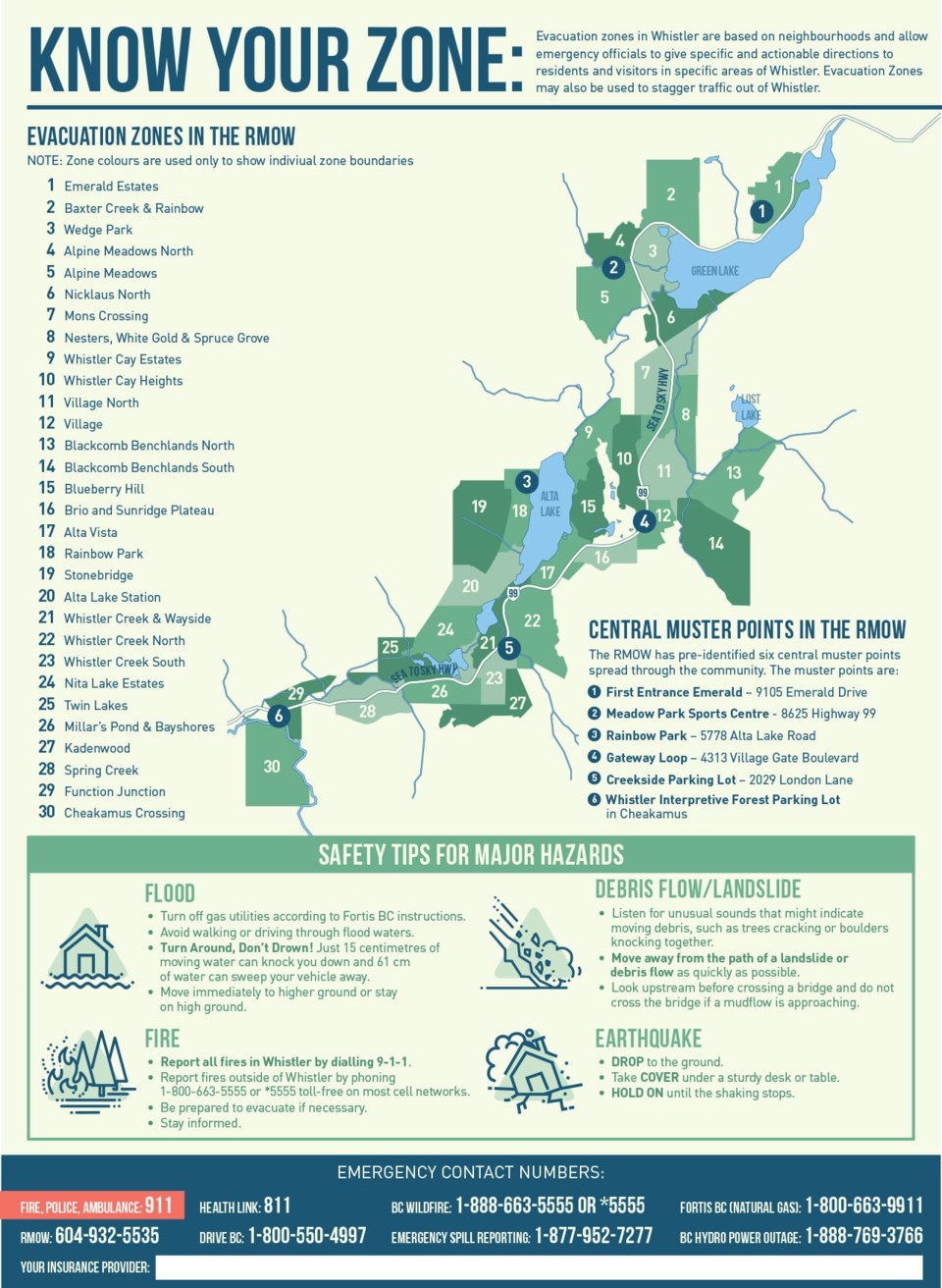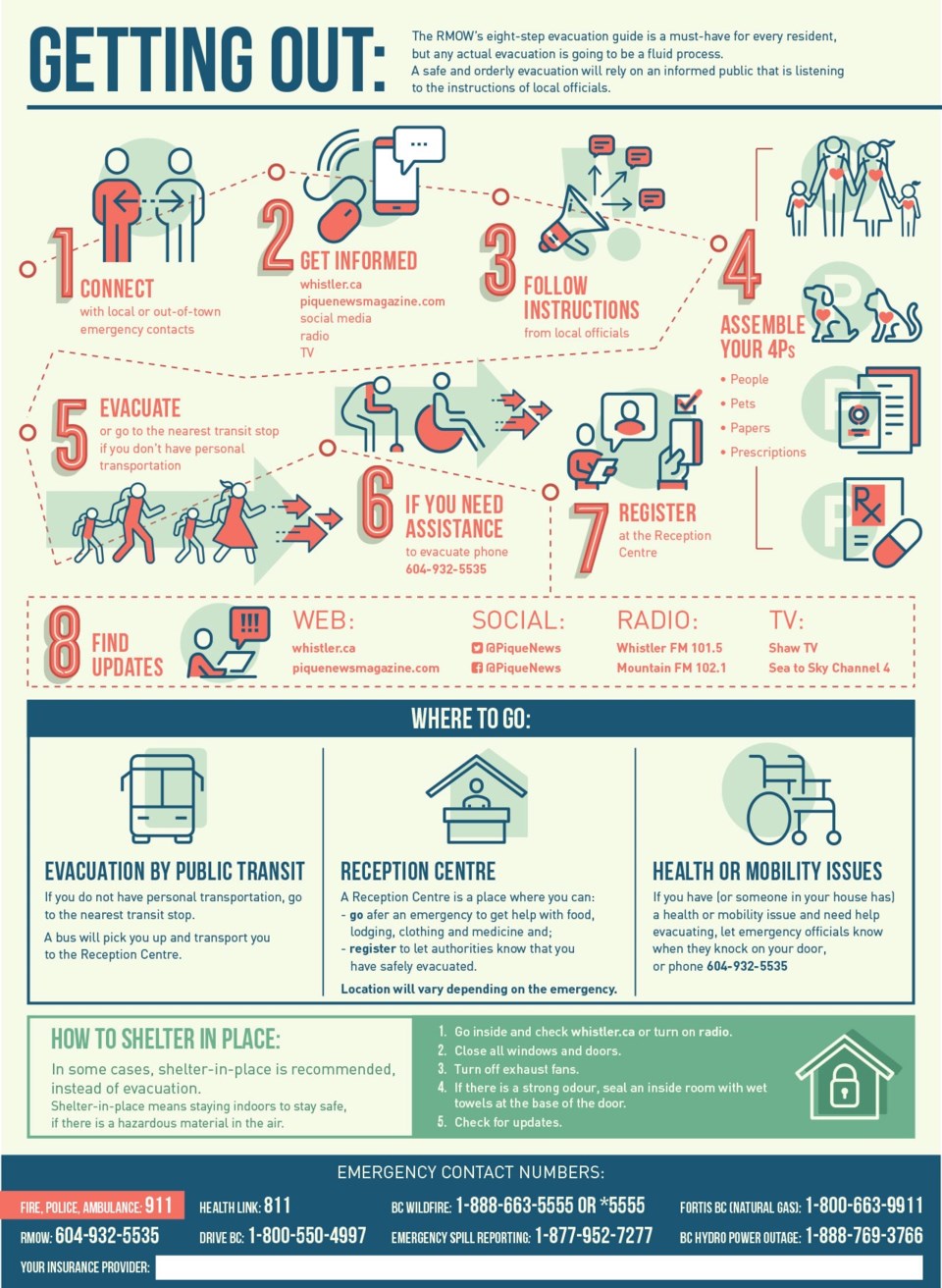Let's get to the point.
Sooner or later (at least according to the experts), another wildfire is going to hit Whistler.
"It's not a matter of if," goes the recurring phrase of said experts and concerned politicians.
"But when."
So.
Now that we've established that unsettling fact, what are we going to do about it?
The first step is to FireSmart your property—but you already know that, don't you? You've already had the home assessment, pruned those danger trees and cleared the space around your home?
Of course you have.
Now.
Step 2 is a bit of a thing—an uncomfortable conversation, but one we need to have.
If you thought removing the beautiful trees cuddled up to your rustic resort living quarters was painful, it's nothing to the pain a full-blown wildfire evacuation would bring.
Just ask Nelson Fire Chief Len MacCharles, who witnessed the catastrophic effects of wildfire firsthand while serving as incident commander in the aftermath of the Slave Lake fire in 2011, and gave the order to evacuate Calgary during the 2013 floods.
"I'm the one who said, 'Let's evacuate,' which turned out to be 80,000 people in the evacuation zone, and all the good and bad things that came with that," MacCharles told nearly 200 delegates at a wildfire and climate-change conference in Nelson last year, which Pique attended.
The crucial call to action from MacCharles' point of view is two fold: have a 72-hour kit (containing all the essentials in the event of an emergency: water, food, medication, first aid, important documents, a wind-up flashlight and radio, etc.) and a personal evacuation plan.
"It is a huge nightmare," MacCharles says. "Even with great planning and trained people, and your community being aware, it's going to be chaotic."
The chaos is easily imaginable—the firsthand accounts and dashcam footage from the evacuation of Fort McMurray in 2016 paint a grim picture of what a last-minute evacuation looks like—but it can be tempered, somewhat, with forethought and preparation.
Marshall Whitsed, news anchor and morning show co-host with Mountain FM, was working for a radio station in Fort McMurray when the fire overtook the city.
"I think there is an element of, you don't realize how bad it can get, so quickly, until you've been through it," Whitsed says, recalling how a blue-sky day devolved into an ominous black pall overhead—and then an imminent evacuation order—over the course of his lunch break. "Something my wife and I always do now, and especially this time of year as we ramp up for summer, is we have half a tank of gas in the car at all times."
Indeed, one of the most harrowing experiences—and lasting memories—Whitsed retains from that fateful day is the time it took his wife to fill up the car with gas, waiting in line with dozens of others at the pumps, flames rising ever higher in the sky.
"You can't always rely on things that you think are going to be there, and it's all good and well saying, 'Well, this is what we'll do: it will be a 13-hour evacuation if this happens,' but you've got to do it early," Whitsed says, noting that it would have been a different story if Fort Mac had evacuated the day the fire broke out, or within 24 hours.
"As it was, you've got a lot of people with PTSD now, and I think what I have learned from that is to be more prepared."
With those sage and sobering words in mind, we present to you the Pique Newsmagazine Grab-and-go Guide to Getting Out—your (hopefully) one-stop shop for all the information you will need before and during an evacuation. Please refer to whistler.ca for more info on emergency preparedness and what to do in the event of an evactuation.
So study up—this is all going to be on the test.
PART 1: STAY UP TO DATE DURING FIRE SEASON
During fire season, always be aware of the fire danger rating, and any campfire bans. Find all the latest info at www.whistler.ca/fire.
If you see smoke in Whistler, call 911.
Fires outside of Whistler should be reported to the BC Wildfire Service at 1-800-663-5555 or *5555 toll-free on most cell networks
Pick up Pique every Thursday (at least to scan the headlines, people), stay up to date on social media, and if a fire does break out, keep track of it with BC Wildfire's handy map at www.bcwildfire.ca.
"If there is a fire nearby, stay on the pulse," says Whitsed. "Monitor the muni feeds, keep an eye on media, because they're the ones that are going to help out, and if you feel you need to go, then go. Don't wait things out, because if you go at the last minute, well, you may get stuck in traffic, or you might have to figure out a different way to get out."
PART 2: MAKE A PLAN/MAKE A KIT
PLAN: Talk to your family, and make a plan about what you will do in the event of an evacuation.
Talk to your neighbours, and get a sense of their needs—will they need help evacuating? What are their work schedules like? How will you help each other when it matters most?
Decide on a safe meeting place should you and your family get separated.
Designate someone to pick up your kids from school or daycare if you can't get there.
Know how to turn off utilities if necessary.
Everyone's plan will be different, depending on their circumstances (Do you have a car? Kids? Pets?)—the RMOW has created a guide to making a personalized evacuation plan on its website at www.whistler.ca/evacuate.
KIT:
- Important documents.
- Medications.
- Clothes.
- Important objects like photos, heirlooms.
- Pet needs.
"When we went to the work camp when we evacuated, we had my cat in a cat carrier with some food, but we had no litter," Whitsed recalls.
"And we couldn't get litter because of the remote location, so we had to go find, like, gravel, and do a makeshift cardboard box with litter for our cat.
"It's all the little things."

WHAT ARE YOU FORGETTING?
Everyone's evacuation needs are going to be different, but it's important to remember that, during an emergency, there won't be time to collect everything you need.
So be prepared.
Have emergency kits for your home, office and vehicle.
Each should contain food, fresh water, medication and supplies for you and your family to cope at least three days or more without outside assistance.
"It may be weeks before infrastructure, utilities and essential services are restored. Are you prepared to cope?" asks the RMOW website.
"Think of ways that you can pack your emergency kits, so you and other family members can take them with you, if necessary. During an emergency, phone, gas, electrical and water services may be disrupted. Roads could be blocked, stores closed and gas stations out-of-service," the RMOW's website reads.
PART 3: KNOW YOUR ZONE
In the event of an evacuation, residents will be asked to KNOW THEIR ZONE and get to the nearest MUSTER POINT.
"If we had a lot of advance notice, and a wildfire was kind of approaching and we were monitoring, most likely what we would do is have transit buses run their regular routes and pick up people at their transit stops, that didn't have transportation, bring them to somewhere like the Gateway Loop, and bus them out using coaches and the local transit," said emergency program coordinator Erin Marriner at a recent emergency-preparedness committee meeting.
"We designed it so that hopefully nobody has to walk more than two kilometres to a central muster point."
"Ideally, people are able to get a transit bus close to their house, the one they usually take, but if it's something that's unfolding really fast, you just go to your closest muster point and a bus will take you out of town."

PART 4: GETTING OUT
The RMOW's eight-step evacuation guide is a must-have for every resident, but any actual evacuation is going to be a fluid process. See the following page for a pull-out guide to the evacuation steps.
A safe and orderly evacuation will rely on an informed public that is listening to the instructions of local officials.

Download PDF versions of these worksheets via the links here:
- Pique's Evacuation Guide - Part 1
- Pique's Evacuation Guide - Part 2
- Pique's Evacuation Guide - Part 3
Print at them home, discuss, plan and scribble on them with your family/household and keep for a quick reference.




